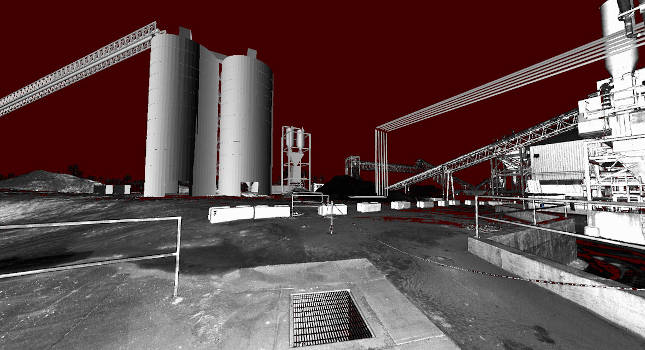A Houston area petrochemical blending facility was experiencing numerous operational and maintenance issues with their steam-heated oil and lubricant storage tanks.

A Houston area petrochemical blending facility was experiencing numerous operational and maintenance issues with their steam-heated oil and lubricant storage tanks. Improperly sized and designed system components, as well as incorrect piping layouts, were leading to the facility not being able to maintain tank setpoint temperatures, thereby increasing system maintenance requirements. Spirax Sarco was able to assist them in standardizing system designs, which allowed for reliable, consistent, operational temperatures and minimal downtime.
At ambient temperatures, heavy oils and lubricants cannot be pumped due to high viscosity. Steam-heated storage tanks are used in order to reduce the viscosities of stored viscous fluids so that they can be pumped as needed. Due to the irregular demand on those products, the heat needs to be supplied continuously to the tanks so that there is constant availability. When product temperatures vary below setpoint, pumping the product can become difficult. When product temperatures vary above setpoint, the product can be damaged requiring disposal. Both outcomes can prove costly.
Typical steam-heated storage tank layouts consist of low- to medium-pressure steam that is supplied from a steam header and passes through a heat exchanger installed inside (coil) or outside (wall jackets) of a tank. The steam condenses and releases its latent heat into the product, then the condensate discharges either to grade or into a condensate return header. The heat exchanger can be as simple as a tubing coil or as complex as a full tube bundle array installed inside a tank.
Tank heating duty requirements vary due to tank volume, insulation level, product specific heat, and initial heat-up time limitations. This means that "one size fits all" is the incorrect approach for the design of steam and condensate systems.
The amount of duty that the steam system is required to provide will greatly depend on allowable warm-up time. The warm-up period consists of two heating requirements: the heat required to raise the product temperature from ambient to its operating temperature; and the heat required to raise the tank material from ambient to its operating temperature. The holding period duty requirement is the heat lost from the solid surface of the vessel to the atmosphere. In most cases the duty requirement for the warm-up period will be five to 10 times greater than the duty required to hold the product at the setpoint temperature. Where possible, the warm-up period should be extended in order to avoid oversizing the steam regulator and to minimize steam flow requirements.
The simplest system-component design consists of a steam regulator with temperature control and a steam trap. The regulator utilizes a sensing element to modulate its valve position, which controls the amount of steam flow entering the heat exchanger based on product temperature. The steam trap is an automatic valve that allows condensate flow to pass while stopping live steam flow from exiting the heat exchanger. It is recommended that a float and thermostatic steam trap be used for this service because this type of design responds immediately to changes in flowrate and can be sized for a wide range of flowrate requirements.
There are three main types of steam regulators frequently found applied to this service:
- Direct-acting
- Pilot-operated
- Pneumatic.
For the petrochemical industry it is recommended that either pilot-operated or pneumatic regulators be applied, due to their performance response time and sizing flexibility. A self-powered, self-acting temperature control regulator such as the pilot-operated unit does not require any electricity or pneumatics to operate.
Pneumatic control valves should be considered where steam quality is a concern, system response time to temperature changes is critical, or if there is a large variance in setpoint temperatures for a single tank. A pneumatic control valve will require plant air and a control scheme in order to be implemented. The control scheme can be as simple as the use of a stand-alone pneumatic controller, or as complex as an electronic temperature transmitter communicating with the facilities’ DCS (or a local process controller), which controls the movement of the pneumatic control valve’s positioner.
Regardless of which type of regulator is being used, incorporating the appropriate supporting equipment will drastically increase operational consistency and component lifespan. It is recommended that the following components be included in the steam and condensate system design:
- A separator with downstream isolation valve installed in front of the regulator. This will not only ensure that the highest quality steam will be available for heating, but it will also allow for condensate drainage when heating is not required, or during maintenance activities. The separator should be supplied with a float and thermostatic trap for condensate discharge.
- A strainer with a blowdown valve incorporated in front of both the steam regulator and steam traps to remove any dirt or scale in the steam.
- Pressure gauges (mechanical or electric) installed upstream and downstream of the steam regulator to provide information on the status of the steam pressures. Accurate knowledge of the supply and operating steam pressures is vital for system troubleshooting.
- An air vent to allow heat transfer impeding air to escape the steam space.
- A vacuum breaker to allow the system to freely drain if a vacuum is created.
Optional Components are as follows:
Overheat protection: Some products are sensitive to high temperature and can spoil if the setpoint temperature is exceeded. If a high temperature alarm with manual shutoff procedure, or a high temperature sensor controlling an automated shutoff valve is not present, then a self-acting, high limit, cut-out control valve should be incorporated. This valve is installed upstream of the steam regulator and will shut off steam supply when the limit temperature is reached.
Condensate Pump: If the condensate is discharging into a condensate return header, then an analysis of the total system operating pressures will need to be completed to ensure that the heat exchanger operating pressure is greater than the total condensate backpressure (header pressure plus lifting head).
The difference of these pressures is the available differential pressure. When the heat exchanger operating pressure is lower than the condensate return pressure, no differential pressure is available and a heat exchanger "stall" may occur. A stall is the reduction or stoppage of condensate flow out of the heat exchanger due to inadequate differential pressure. During stall conditions condensate cannot flow out of the heat exchanger, therefore it backs up or floods the heat transfer surface, which reduces the area available for heating.
As the area available for heating is reduced, the product temperature will decrease. The steam regulator will sense this reduction in product temperature and increase steam flowrate. The increased steam flowrate raises the heat exchanger operating pressure until it overcomes the total backpressure, which allows the condensate to flow into the return system. Depending on operating conditions and design, the stall process may repeat itself continuously, or the system may settle at an equilibrium pressure and constantly run flooded.
A heat exchanger operating in flooded or stall conditions can exhibit waterhammer, fluctuating product temperatures and heating surface corrosion/leaks. These consequences can be prevented by removing the condensate from the heat exchanger via a condensate pump. The most common condensate pumps for this service are pressure-powered pumps and electric centrifugal pumps.
A complimentary walkthrough of the steam-heated tank population was conducted at the Houston area blending facility. Most systems lacked the recommended supporting equipment and had areas of low point piping without drainage where condensate could collect.
After some searching, the blending facility was able to provide operational data for the population of steam-heated storage tanks. Analysis of this data revealed that three standardized system sizes-small, medium and large-would meet the full array of operational requirements.
Once the facility decides that a storage tank’s steam and condensate system is to be addressed, the required duty is calculated from the operational data and the appropriate system size is selected for installation. Having three standard system designs allows for a worry-free purchasing experience. Furthermore, as the designs are nearly identical with only component sizing differences, the installation procedure is simplified, reducing labor time and minimizing piping mistakes.
To this point the blending facility has refurbished numerous steam-heated storage tank systems. It has been noted that the overhauled systems provide consistent setpoint temperatures and trouble-free operation. Selecting the appropriate products with the right sizing and installation will continuously provide excellent results for storage tank heating applications.
-Brett Hollier is an account executive for Oil & Gas and Chemicals. This article was originally published in Steam News. Spirax Sarco is a CFE Media content partner.



